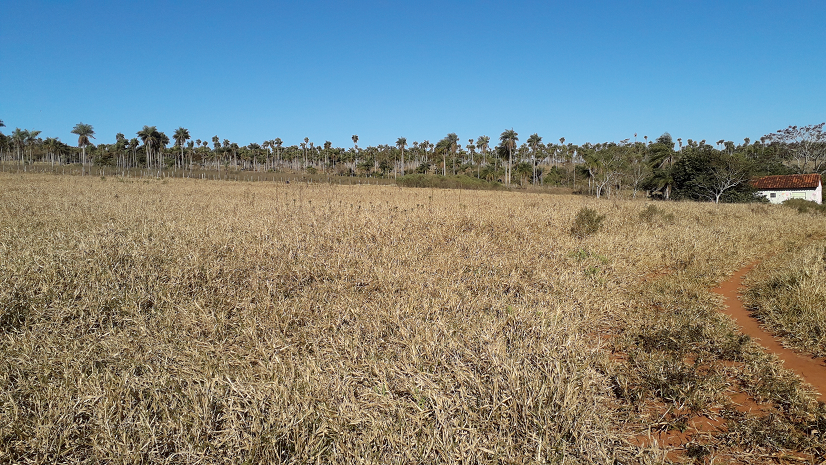Some may consider winter in Paraguay to be a mere technical term. Something marked on the calendar. However there are days when it is truly cold.
The months from June to August are considered to be winter. For much of the time the weather does remain warm and sunny. Very pleasantly in the low 30s Centigrade. That can though swiftly change with the arrival of a mass of cold air sending temperatures down into single figures.
This winter weather is not driven by storms and weather fronts as it is for much of the year. Instead it occurs as a mass of cold air is suddenly driven up from the south. The interior of South America being generally flat there are no physical barriers stopping masses of air moving from one place to another.
The ones that chill Paraguay blow in off the South Atlantic. travelling over the Argentine Pampas they loose any moisture they had been carrying. So by the time they reach Paraguay they bring grey cloud thick enough to blot out the sun but not a single drop of rain.
These weather systems arrive suddenly. Bright skies and temperatures over 30 one day, then cloud filled skies and temperatures around freezing by the following morning. Every year at some point over the winter the temperature will drop below zero. Coating the ground white with frost.
When this dry frost arrives and how often is different every year. At any point between June and August the land may freeze. There may just be one cold snap cold enough to cause a frost, or there may be several.
Either way when it does arrive it kills off all the less hardy plants it meets. Living where I do in the hills tropical plants such as mango, paw paw and banana can have a hard time getting well enough established to withstand a night or two of frost.
The most noticeable change in the landscape though after a frost is the death of the grass. All the vast fields of grass on which cattle graze are reduced within a day of two of a frost to dry yellow straw. The particular strain of grass grown here has no residence to sub zero temperatures. The frost kills it and the strong dry wind quickly drives out all its moisture.
This leaves huge areas of land tinder dry and in great danger from fires. Winter is the time of year when forest and grassland fires are prone to burn uncontrollably across Paraguay. Once alight it is almost impossible to extinguish a grass fire. All that can be done to endeavor to stop it spreading further.
Grass though unlike trees is hard to kill. Even if all is turned to ash fresh shoots will sprout from the buried roots as soon as the spring rains arrive.
How great the danger of fire is depends very much upon how long the grass lies dead and dry. If there is a frost in June it will be months before there is fresh growth. However if the frost does not arrive until August things may start to turn green once more within a month.
This year was one of those years when the frost did not occur until August. Mid August, so very late in the year, catching out some of the trees that had started to put on their spring growth.
One day was bright sunny and warm. Then that night the wind started. It blew strongly all night and by the morning the sky was coated thickly with cloud. The temperature dropped within a few hours from the low 30s to single figures. All that day the wind blew and the temperature dropped still further.
After a day of chilling the night time temperature fell below zero bringing the first frost of the year. By the following morning the sky was clear but the wind was still bitterly cold. That night under a clear sky it was colder still.
Then as quickly as it came the cold snap went. The wind dropped and then within a couple of days temperatures were as high as they had been before the cold. The only visible clue that there had even been a frost remained the dead, dry look of the land.
As these cold spells are exceptions rather than the norm buildings are built with thought to heat not cold. There is no central heating. No hot water unless a house has a boiler and no draught proofing. Gaps around window and door frames are vital to allow cool air to enter the house during the summer. They do though also give cold winter winds a way indoors.
If there is a long cold spell. With clouds and wind for three or four days it will be several more before warmth finds its way back into the houses.
This cold dry air and more importantly the rapid swings between hot and cold do not make the winter air healthy. Throughout this time the locals and especially the children are very prone to cold. At times it can seem that almost everyone has some form of head cold or other. The poor quality of much of the housing and basicness of the diet only add to the problem.
As such everyone, even those who dislike the heat of summer is pleased when the uniformly warm temperatures of spring arrive. Then farmers know they can plant crops without fear and children can play outdoors without their mothers worrying whether they will catch a chill.


Around that time we also had quite a vicious hail storm. Lasted only about 30 minutes.
I saw that storm forecast and was surprised to find it ran out of energy and unplesent stuff before it reached me.
The size of the hail that falls when it does fall very glad it is just a very occasional thing
Keep warm